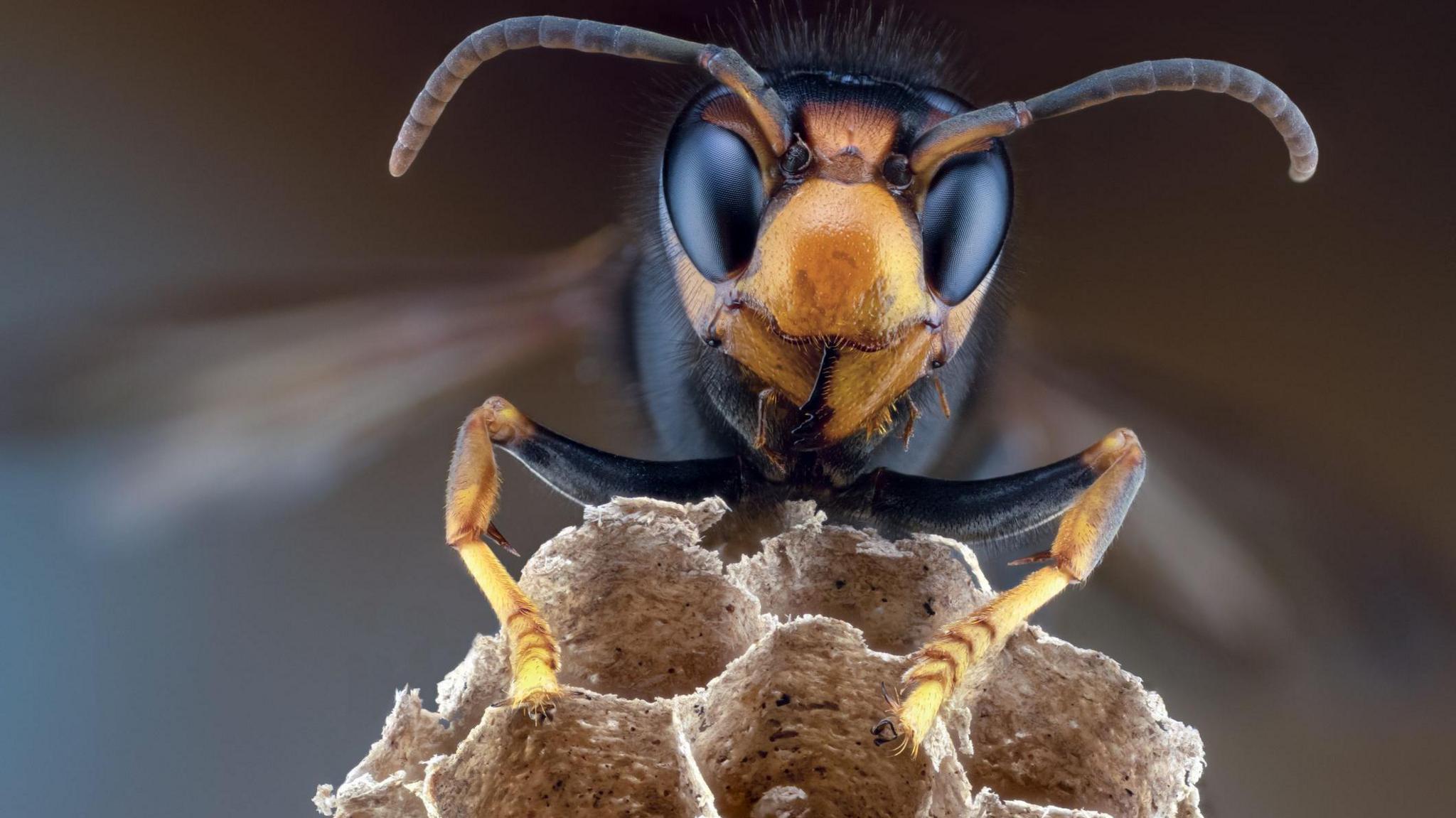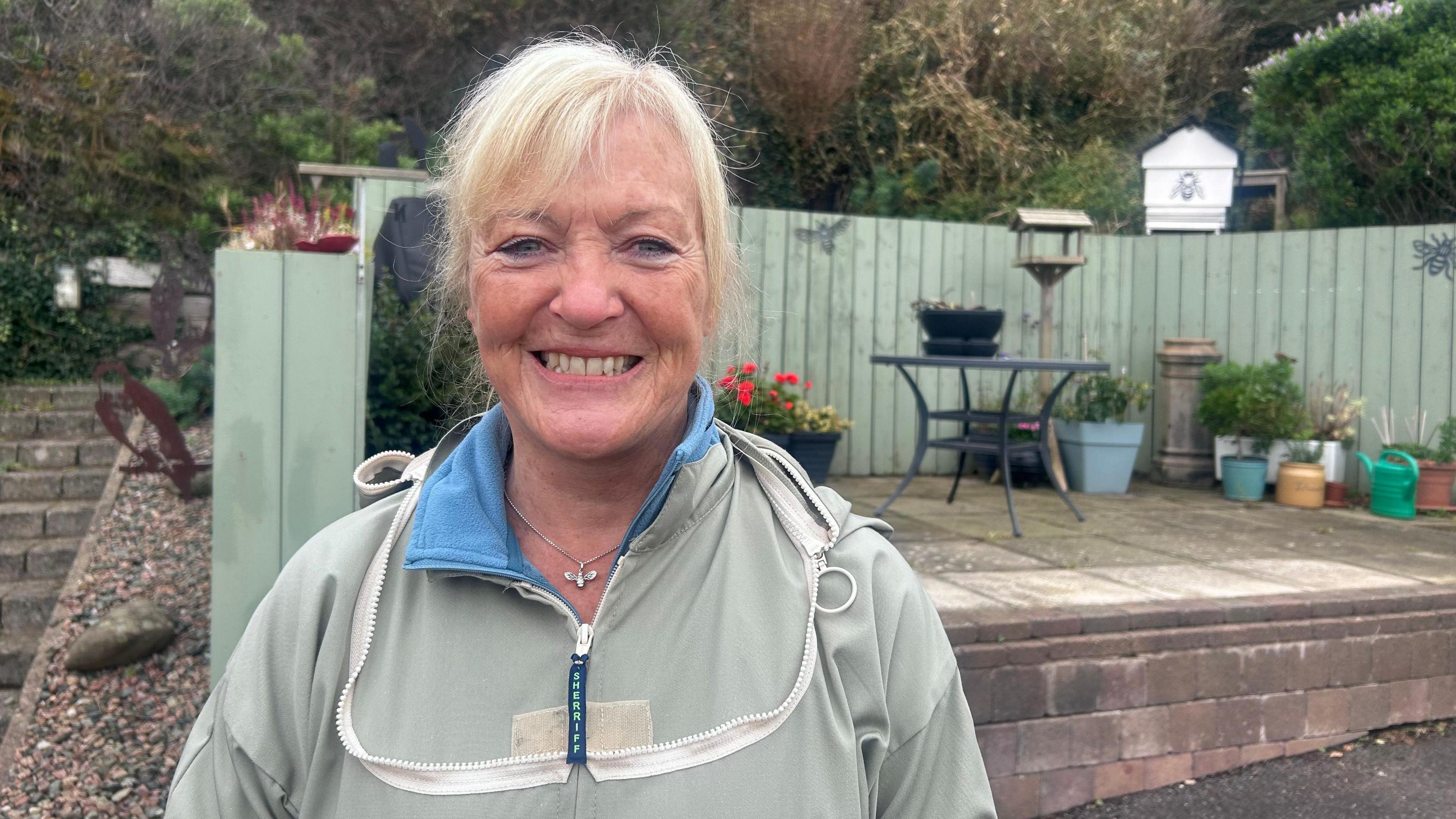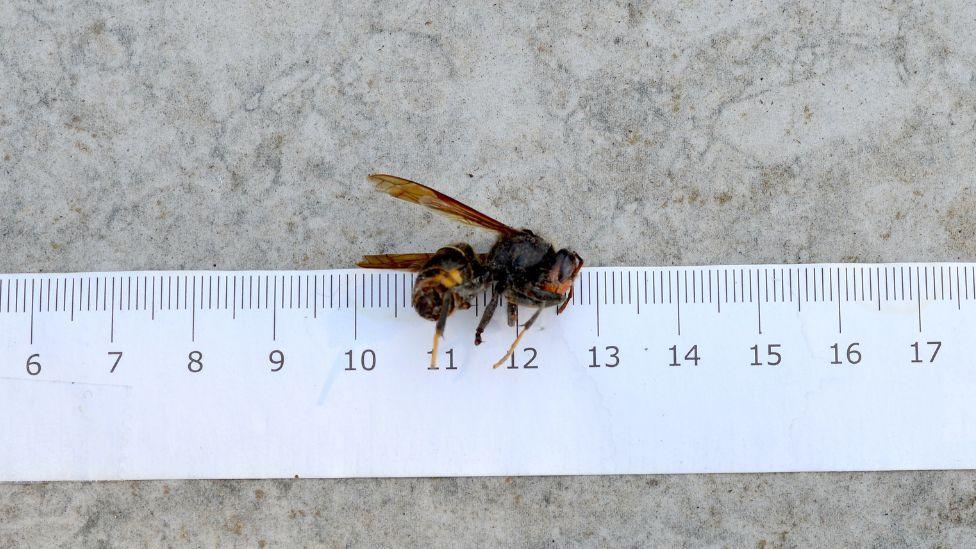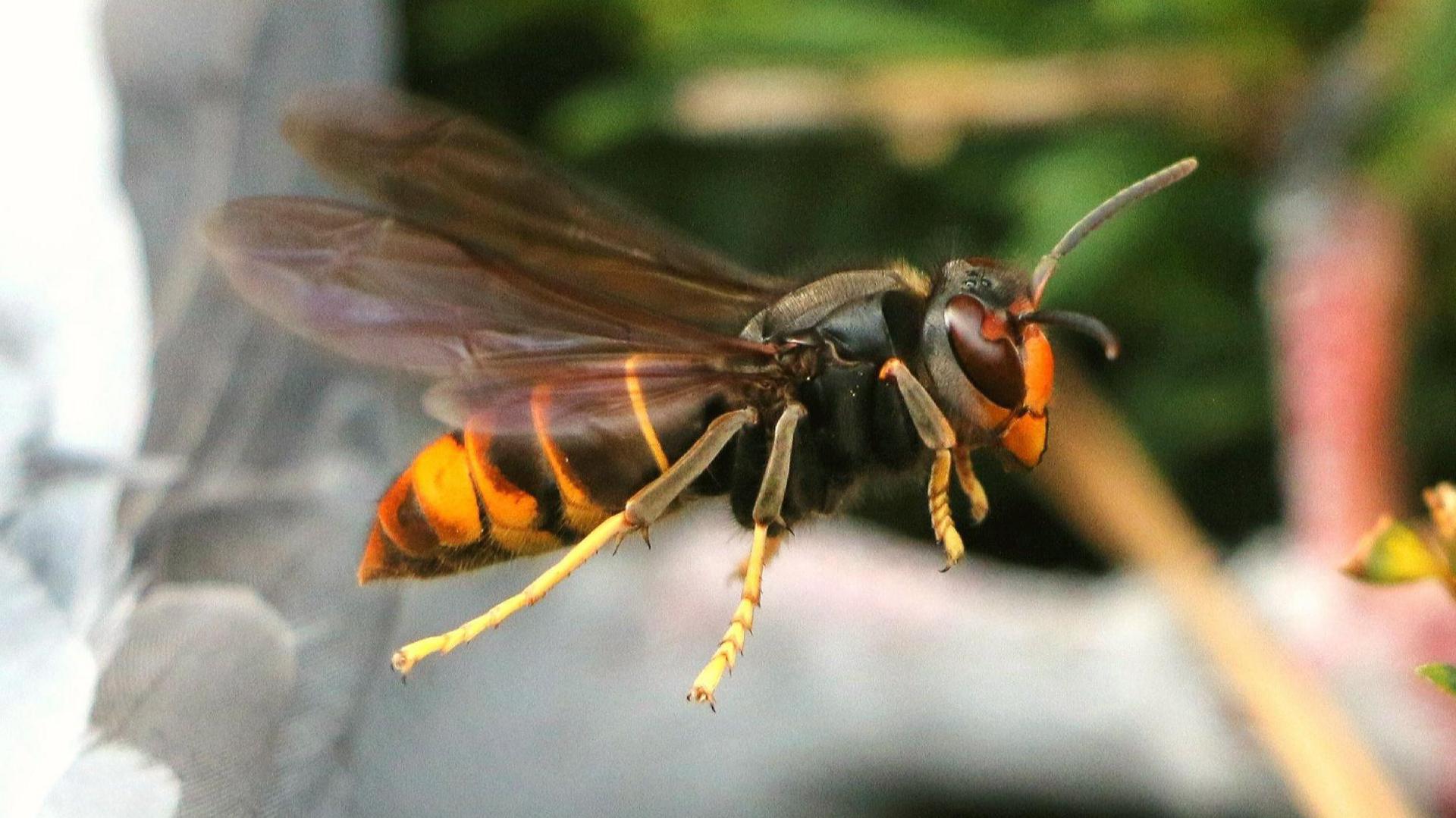Public urged to be vigilant after Asian hornet discovery

The warning follows the first recorded sighting of the insect in Northern Ireland
- Published
The public has been urged to be vigilant following the discovery of an Asian hornet in Northern Ireland.
The insect was captured in the Dundonald area on Friday 10 October by a member of the public.
The chairperson of the Ulster Beekeepers' Association has described the discovery as "very worrying".
"It's a really big predator for honey bees, other little wasps and little native insects," Valentine Hodges added.
Are Asian hornets dangerous?
Asian hornets pose no greater threat to humans than native hornets (wasps), however they do pose a bigger threat to native insects.
Ms Hodges said the Asian hornet could "have a big impact on biodiversity and on pollinator services".
She emphasised the importance of public awareness on what the hornet looks like and how the public can report it.
"We do have the Asian Hornet watch app, external that people can download onto their phones," she told BBC's Good Morning Ulster programme .

Valentine Hodges said the find was worrying
Dr Archie Murchie, senior principal scientific officer at the Agri-Food and Biosciences Institute, said the Asian or yellow-legged hornet is an apex predator that preys preferentially on honey bees but on other insect and spider species as well.
"Our honey bees and our pollinators haven't got the same defences that the natural prey for this hornet would have in southeast Asia," he told the programme.
Dr Murchie said that due to climate change, UK summers are becoming warmer and, there is an increase in species that are not normally suited to the climate.
What is an Asian hornet?
The Asian Hornet originated from east Asia and was first recorded in France in 2004
The species is active between April and November, but especially in August and September
The insect is about 2cm long, mostly black and brown with an orange face, orange tail and yellow legs
The yellow-legged hornet can be confused with the native European hornet, which is larger and mostly pale yellow with black stripes.
Their nests are often found in hedges or near to the ground
The hornets feed on more than 1,000 species including honey bees, bumble bees, butterflies and beetles.

The insect, which is about 2cm long, feeds on more than 1,000 species
Individual hornets and nests have been increasingly recorded in southern counties of England, while two nests were found and destroyed in County Cork earlier this summer.
Speaking following the discovery of the Asian hornet in Dundonald, the Environment Minister Andrew Muir said: "This is a solitary Asian hornet, but a departmental response is underway to ensure that no other Asian hornets are present."
He added: "This is a harmful species that I do not wish to see becoming established in Northern Ireland as it presents a serious threat to both biosecurity and local ecology, particularly valuable pollinating insects."
The NIEA said its officials have begun a monitoring programme involving live traps and a visual survey to determine if it is an isolated hornet, or whether there may be a nest.
In a statement the body said If other Asian hornets are detected and confirmed, "intensive monitoring will continue to trace and remove any nest, with monitoring afterwards to ensure that there is no further Asian hornet activity".
It added: "The public are also urged to be vigilant and report any suspect insects, ideally with a photograph, to DAERA, external."
- Published14 August

- Published30 August
